#metropolitan university
Text
omg i know the girl who's cousin is suing Ryerson university now called Metropolitan university for "antisemitism". Let me tell you a little bit about the girl i know at least. she blocked me because i posted pro palestine shit on facebook. ive also hung out with her to which she would brag about having a holiday house in florida, a house in israel, and has her own condo bought and paid for by her parents in toronto lmao. ofc these people can afford to sue a school!!! you fucking losers!!!!
5 notes
·
View notes
Text

Educatorium (1995-97) in Utrecht, the Netherlands, by Office for Metropolitan Architecture
#1990s#university#architecture#netherlands#architektur#utrecht#rem koolhaas#office for metropolitan architecture
122 notes
·
View notes
Text

A former Chief Justice of Nova Scotia has exonerated dozens of pro-Palestine law students (including my client) who were falsely accused of anti-Semitism by Toronto Metropolitan University.
The McCarthyite witch-hunt against these students was fuelled by 22 well-heeled Ontario lawyers, including National Post columnist @HowardLevittLaw .
In a recent debate with me, Levitt made the unhinged claim that Israel’s genocidal rampage in Gaza is “the most moral war in the history of the world”.
My analysis of this judge’s decision can be read here:
43 notes
·
View notes
Text


Toronto Metropolitan Volleyball
#Toronto Metropolitan University#TMU Bold#volleyball girls#college volleyball#athlete#female athletes#college athlete#college girl#bikini#athletes in bikinis
44 notes
·
View notes
Text

Scientists find new way to roll atomically thin nanosheets into scrolls
Researchers from Tokyo Metropolitan University have come up with a new way of rolling atomically thin sheets of atoms into "nanoscrolls." Their unique approach uses transition metal dichalcogenide sheets with a different composition on either side, realizing a tight roll that gives scrolls down to five nanometers in diameter at the center and micrometers in length. Control over nanostructure in these scrolls promises new developments in catalysis and photovoltaic devices.
Nanotechnology is giving us new tools to control the structure of materials at the nanoscale, promising a whole nano-toolset for engineers to create next generation materials and devices.
At the forefront of this movement, a team led by Associate Professor Yasumitsu Miyata of Tokyo Metropolitan University has been studying ways to control the structure of transition metal dichalcogenides (TMDC), a class of compounds with a wide range of interesting properties, such as flexibility, superconductivity, and unique optical absorbance.
Read more.
#Materials Science#Science#Nanotechnology#Materials processing#Transition metal dichalcogenides#2D materials#Tokyo Metropolitan University
22 notes
·
View notes
Text








the metropolitan museum of art
#the met#met#the metropolitan museum of art#art museum#art#photography#aesthetic#study#studyblr#study blog#study motivation#studyspo#new york#nyc#university#new york city#light academia#dark academia#pinterest#claude monet#study inspiration#study aesthetic#college#student life#manhattan
79 notes
·
View notes
Text

Unlearn Transphobia
Ryerson University Student Union, 2010s
#ryerson university student union#toronto metropolitan university#button#badge#pin#queer#trans#transphobia#lgbt#lgbtq#lgbqti#toronto#canada#2010s
5 notes
·
View notes
Photo










“UG Architecture Studio 05: Existing/Proposed: Making the most of what is there already” _ Studio Lead: Theodoros Thysiadis _ Studio Tutors: Spyridon Kaprinis, Christopher Smith _ London Metropolitan University Summer Show 2023 _ Photos by: Spyridon Kaprinis [20.06.2023].
https://www.londonmet.ac.uk/schools/art-architecture-and-design/studios/2022/undergraduate-architecture/ugarchitecturestudio-05/
#UG Architecture Studio 05#London Metropolitan University#Summer Show 2023#Existing/Proposed#Theodoros Thysiadis#Spyridon Kaprinis#Christopher Smith#2023
11 notes
·
View notes
Text
everything will be going fine and then i remember the sheer amount of uni work i have due in january that i haven’t started yet and i actually feel like i’m going to throw up

#go to university they said#it’ll be fun they said#and here i am#truly and honestly suffering#you’re telling me that i should be thinking about my dissertation ?!#and thinking about a career?!#and getting my driving lisence ?!#and doing internships ?!#and using linkedin (arguably the worst) ?!#and looking for housing for next year since it already took months to find the place i’m in right now last year#and on top of that still trying to have some kind of semblance of a social life#but not too much because otherwise i won’t pass my assignments and won’t get a degree#all of this when i’m only 19…. I SHOULD BE AT THE CLUB#or at least in a cottage in the woods far away from this all where i can read and go on walks#instead of being at uni in the biggest city in my country when i literally despise metropolitan cities#get me out#GET ME OUTTT#i cant even feel christmassy because of these stupid assignments hanging over my head like a sword#like i cant do this#rosa shut up challenge#on top of this#my mental health is literally a dumpster fire#wonderful#soooo wonderful and fun for me#i cannot stress enough that i was made for the ocean and the mountains and i was NOT made for uni
3 notes
·
View notes
Text
Riddle Me This
This week, Alyssa, our Art History blogger, goes into great detail explaining the history on greek sphinxes. She shows us different examples that are viewable at different museums, and gives insight into the difference between Egyptian and Greek Sphinx.
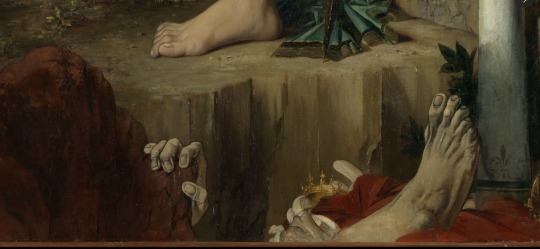
View On WordPress
#ancient civilization#ancient greece#ancient sculpture#Art#Greek#Greek Mythology#Greek Sculpture#greek sphinx#inspiration#Marywood Art#Marywood Art Department#Marywood University#Marywood University Art Department#Metropolitan Museum#Minotaur#New York#Oil Painting#Painting#Relief Sculpture#Sculpture#sphinx#Stelae#The Met#Where Creativity Works
3 notes
·
View notes
Text
Further reading:
Hyperallergic: The Charges Against a Notorious Suspected Smuggler of Indian Artifacts, August 19, 2019
Hyperallergic: US Authorities Seized 13 Looted Asian Artifacts From Yale University, April 6, 2022
Hyperallergic: Disgraced Art Dealer Subhash Kapoor Hit With 10-Year Prison Sentence, November 3, 2022
Hyperallergic: Looted Antiquities Seized by DA Belonged to Met Trustee, December 2, 2022
Hyperallergic: 1,000+ Objects at The Met Linked to Antiquities Smugglers, March 20, 2023
#India Pride Project#Metropolitan Museum of Art#Yale University Art Gallery#museums#repatriation#shelby white#Subhash Kapoor#smuggling#art#art history#art world#archaeology#Hyperallergic#Denver Art Museum#Harvard Art Museums#Norton Simon Museum#Los Angeles County Museum of Art#National Gallery of Australia#Honolulu Art Museum#Toledo Museum of Art#Thomas Hoving#International Consortium of Investigative Journalists#news
3 notes
·
View notes
Text
Jorge Urrutia Galicia: A Mexican Pioneering Mathematician And Computer Scientist

Jorge Urrutia Galicia is a Mexican computer scientist and mathematician.
Galicia is best known for his work on geometry. He made contributions to many different areas of mathematics, including discrete geometry, discrete optimization, and computational geometry. His specialty in computational geometry has made him recognized as one of the leading researchers worldwide. His research has also focused on combinatorial optimization, which is related to combinatorial game theory.
His early works dealt with problems of separability and visibility, a field in which he is an indisputable authority. While it is clear that mathematics has always played a basic role as the underlying foundation of all technology, especially now, and in this case it is confirmed why the technological scope of Dr. Urrutia’s articles in routing is significant; suffice to mention just one: recently algorithms are being implemented based on the ideas of Dr. Urrutia, to make communication networks that can be used in case of natural disasters.
Since the end of the 20th century, he began to work on routing problems, developing algorithms for both the combinatorial and geometric problems, which literally founded a work area of great importance in its application to wireless and cellular networks. In the 21st century, Dr. Urrutia has also stood out for his numerous contributions to the study of discrete sets of points, on which he has made decisive contributions, both in their solution and formulating various variants.
Dr. Jorge Urrutia Galicia studied a bachelor’s degree in mathematics at the Faculty of Sciences of UNAM from 1971 to 1974, and a master’s and doctoral degree in mathematics at the University of Waterloo, Canada from 1976 to 1980. He has worked at the Metropolitan Autonomous University-Iztapalapa, CIMAT, Carleton University, Ottawa University from 1984-1998, where he was "full professor", and since 1998 at the Institute of Mathematics of the UNAM. On average, he teaches five courses each year (two undergraduate and three postgraduate courses).
Annually, he organizes at least two research workshops in Mexico, one of its main objectives being that its students know and work with renowned researchers and learn to collaborate with them as equals.
From 1990 to 2000, he was editor-in-chief of the journal Computational Geometry, Theory and Applications, published by Elsevier Science Publishers. He has been a member of the editorial boards of the Mexican Mathematical Society Bulletin and of Graphs and Combinatorics (Springer, and Computational Geometry: Theory and Applications (Elsevier). He was also editor of the Handbook of Computational Geometry (2000), one of Elsevier's first published handbooks.
He has published more than 270 articles in conference proceedings and research journals in mathematics and computing, which have received more than 6,000 citations, among the most important are two articles on routing in ad-hoc and wireless networks, which have received more than 2 600 citations together: “Compass Routing in Geometric Graphs” and “Routing with Guaranteed Delivery in Ad Hoc Wireless Networks.” In these investigations, Dr. Urrutia develops new strategies – highly efficient – to send information on wireless networks that take advantage of the characteristics obtained by recent technologies such as GPS, in addition to allowing them to travel through these networks effectively without having knowledge of their topology. It is worth mentioning that in 2012 he was the most cited mathematician of the UNAM.
He has given more than 40 plenary lectures at international congresses on Computational Geometry. He was editor-in-chief of "Computational Geometry, Theory and Applications" from 1990 to 2000. He has supervised more than 55 bachelor, master and doctoral theses.
In 2015, he received the "National University in Research in Exact Sciences" award at UNAM. He is is a member of the National System of Investigators, Level 3 He has organized and participated in the organizing committees of several national congresses including the "Victor Neumann-Lara Colloquium on Graphic Theory and its Applications", the "Canadian Conference on Computational Geometry", the "Japan Conference on Discrete and Computational Geometry" and the "Computational Geometry Meetings" (Spain). Oher countries where he has also participated in this way are Italy, Indonesia, Philippines, China, Canada, Peru and Argentina, as well as his home country, Mexico.
Source: (x) (x) (x)
#🇲🇽#STEM#Jorge Urrutia Galicia#mexico#UNAM#mathematics#geometry#computer science#mexican#latino#hispanic#discrete optimization#combinatorial game theory#natural disaster#technology#wireless network#cellular#Metropolitan Autonomous University-Iztapalapa#CIMAT#Carleton University#Ottawa University#Institute of Mathematics#Elsevier Science Publishers#Mexican Mathematical Society Bulletin#National University in Research in Exact Sciences#canada#europe#spain#japan#italy
2 notes
·
View notes
Text

totoya hokkei, "bunsai art circle, the five elements: fire / guide to the [yoshiwara] pleasure quarters", late edo period, ca. 1820. depicting a richly-dressed courtesan at night, caught in the beam of a lantern.
#japan#edo period#late edo period#surimono#museum trawling#image source: metropolitan museum of art#there's a very good academic video-essay about the changing depiction of light in 19th century japanese art; i don't recall the title#but it was made by some student at the university of wisconsin. i suspect you could find it if you went looking
4 notes
·
View notes
Text
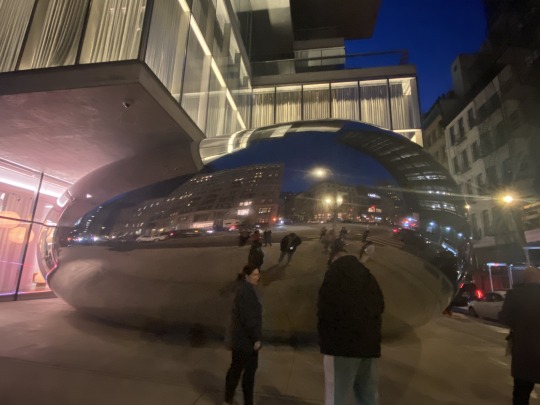

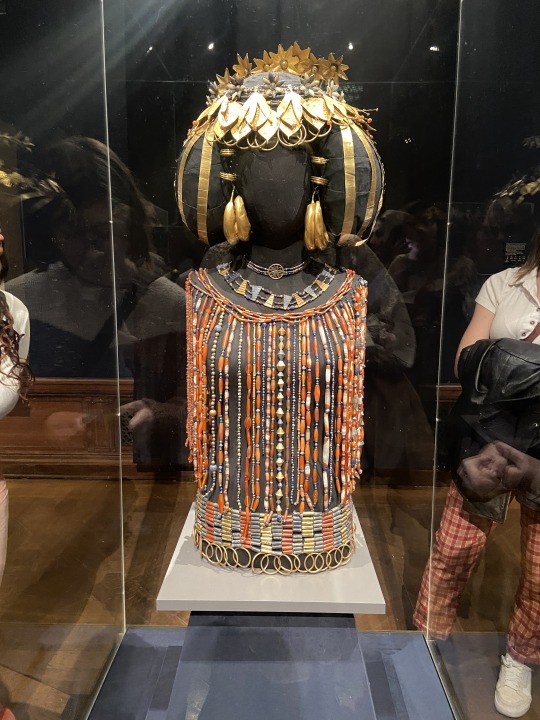


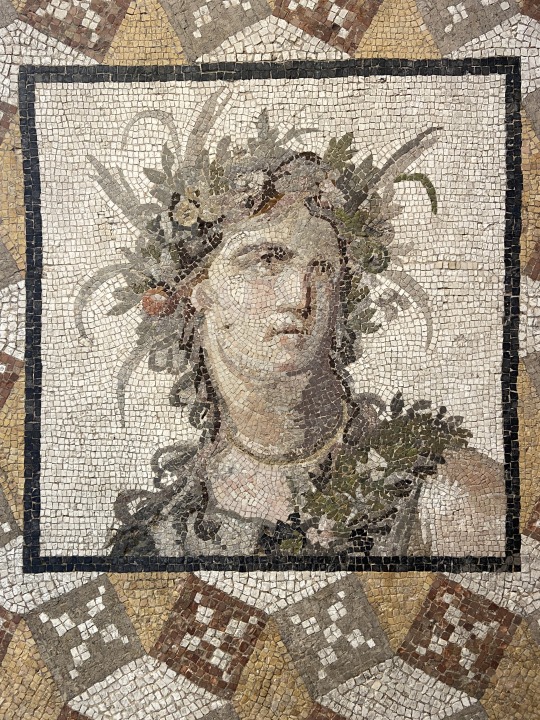

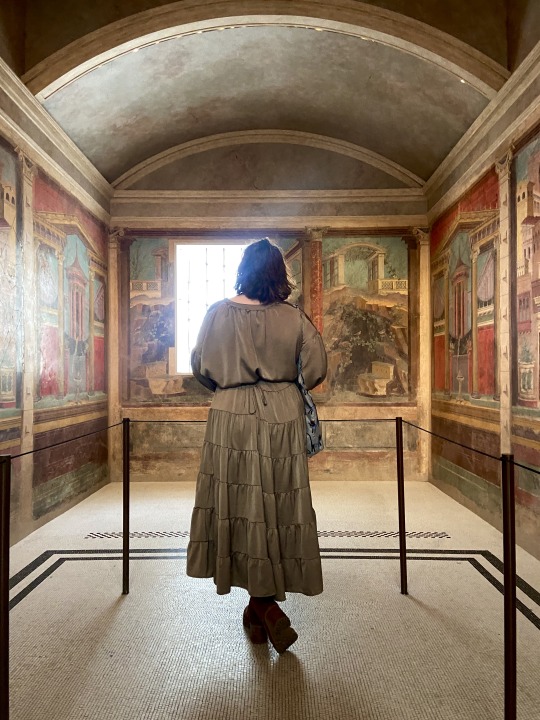
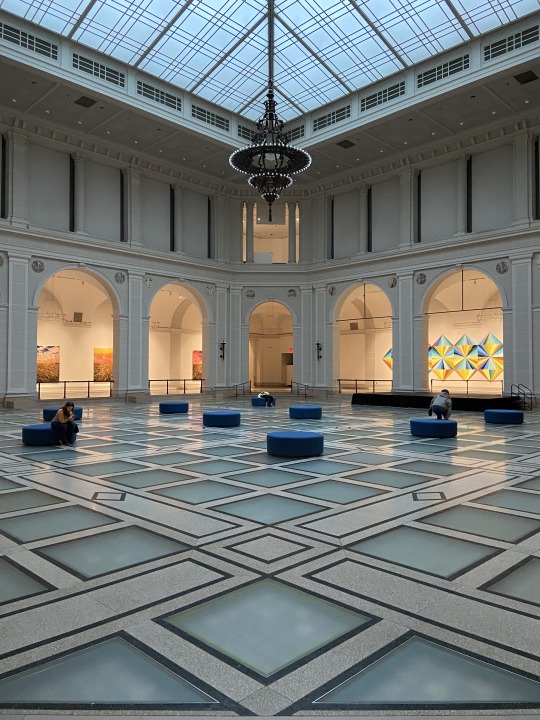

New York City: Feb. 14- Feb. 19
Friday, March 10, 2023
From February 14th-19th, I had the opportunity to go on a university class trip to New York City to meet with professionals in the Art History field and to explore the rich art scene of the city. This is the second trip of this sort that I have gone on with my school, but this trip was special because of the emphasis on meeting with art museum professionals- the field which I will be entering after graduation. During the week I was in the city, I visited the New York Public Library, the Morgan Library, MoMA, the MET, the Brooklyn Museum, and the Rubin Museum. We met with so many amazing professionals, including the chief curator of the Egyptian exhibit at the MET and one of the Egyptian artifact conservators who works at the MET as well.
On my first night in NYC, a couple of classmates and I explored the city in search of Anish Kapoor’s mini-bean under the jenga building. Visiting this newest iteration of Cloud Gate was a great way to start our art history trip- seeing this new piece of history that had recently been installed in the Big Apple. Visiting such an iconic piece of art, regardless of how one feels about Kapoor, was a grand way to kick off the trip!
On the 15th, after visiting some of the photo archives at the NYPL, our class attended a guided tour of the Morgan Library. We got to have such a surreal, humanizing, and unique experience during the tour when the docent pulled out a 5000 year old cylinder seal from ancient Mesopotamia and let us each hold it. My passion for art history was sparked when I first learned about ancient visual culture, so being able to hold this piece of history was a full-circle moment for me and my peers. It brought to life what we often can only view in photos or behind glass.
At the Morgan Library, we toured the exhibit “She Who Wrote: Enheduanna and Women of Mesopotamia, ca 3400-2000 BC.” It was all about the women of ancient Mesopotamia and how womanhood was understood during those times. We learned so many beautiful things about women deities who were bringers and takers of life, or wagers and enders of wars. A piece that really stood out to me was the costume for a Mesopotamian queen. The beading was gorgeous, featuring lapis lazuli- indicating the reliable trade the Mesopotamians would have had in what is considered modern-day Afghanistan. I noted that her headdress must have been an inspiration for Queen Amidala’s styling in the Star Wars franchise, calling back to the powerful women of our ancient civilizations.
After visiting the Morgan Library, we went to the MoMA. This being my second time at the museum in the last 10 months, I was comfortable visiting the pieces I missed the most- one of which being Matisse’s Dance. This painting always stuns me due to the grand scale of it and the use of vast fields of cool toned colors- green and blue.
On the 16th we spent the entire day at the MET. This was my second time at the MET as well, so I spent a majority of my time catching up where I left off last year- finally entering the wing of the Greek and Roman galleries where the cubiculi and mosaics are housed. The Chroma exhibit throughout the galleries was stunning to put it lightly! Classical sculpture is where my heart lies and finally I was seeing what the people I admire so much were seeing when these sculptures were at their prime. The Boxer sculpture has always been one of my favorites, so seeing it in such surreal detail was overwhelming and unforgettable. The Chroma exhibit had me imagining what my life would be like if I worked in the MET and got to study sculptures and look for remnants of pigment on them. It is groundbreaking research and I have such immense respect and appreciation for the brilliant art historians and scientists who are doing geeks like me this service.
Some things that were stunning and gripped me in tears for an hour were a mosaic of a woman in a wreath, coins depicting Trajan, and the vibrant cubiculi that I did not have a chance to visit last year. These are what it is all about for me. These are what my discipline mean to me! Seeing the mosaic mere inches from my face, as opposed to from around a roped-off corner as I did last year, allowed me to see all of the individual tesserae and imagine how it would have looked inside of a Roman villa. The coins with Trajan on them made me incredibly emotional, as I am somebody who studies Roman emperors. These were undeniable visual evidence that these subjects I devote so much of my studies to were real people! Real people who had real impacts on the world and who I only wish I could have met. The star of the show for me though were the cubiculi. I had been dying to finally enter one ever since I first studied Roman villas, particularly Pompeiian villas. As I stood inside of the cubiculum pictured, I took my time admiring all of the gorgeous frescoes. Frescoes I had only seen in textbooks and on powerpoint slides. There they were, right in front of my face. All the room needed was the proper furniture and I would have been exactly where my heart longs to be.
Lastly, on Friday the 17th, we visited the Brooklyn Museum as a class and later some of us visited the Rubin for a free guided experiential tour and DJ event. At the Brooklyn Museum, we got a tour from one of their museum educators of the Thiery Mugler exhibit. My goal is to be a museum educator, and to make museums enjoyable and understandable for every visitor. Our tour guide did exactly that for us. Part of our tour included ten minutes for us to go around the exhibit with provided paper and pencils, to draw any of the costumes we were drawn to and to think about the material or how the costume must have felt. She provided us with an activity that I definitely would have done if I were in the same position. That activity engaged our intrinsic motivation, allowing us to connect with a piece of our choosing, but it also encouraged us to think critically about the pieces in the exhibit. How would they have felt? Who would wear them? Why am I connecting to it? She showed me exactly how effective and necessary museum educators are in order to engage all visitors and to break down barriers of intimidation in museum spaces.
The Brooklyn Museum had a lounge area that I connected with during my individual expiration of the museum. Museum fatigue is real and can be a huge barrier to enjoyment for museum-goers. Not only was this room visually stunning, the ottomans were also art and welcomed visitors to be comfortable and relaxed. This is something that I am passionate about as I prepare for my future in museums. I know how important comfort is when people have so much going on in their days and lives. My respect for the Brooklyn Museum only went up that day, as I went down and laid on one of the ottomans.
At the end of the night, at the Rubin museum, I attended a guided tour of the galleries. The Rubin is a museum of Himalayan art and visual culture. The gallery is meant to be experienced rather than viewed. We explored our senses as we explored the galleries, we meditated, we transformed our energy into something beautiful. The whole design of the museum and tour were a unique take to museums and welcomed visitors into Himalayan Buddhist culture and practice. I think that this is a museum that everybody should visit if they have the opportunity to do so.
Overall, this trip did a lot to prepare and excite me mentally for my impending future. Soon I will be released into the world, no longer in school, no longer in a classroom. The professionals we met with during our trip provided a lot of insight into the many avenues and journeys one may endeavor to get to where they are going. My journey so far has had so many twists and turns, and it was comforting and affirming to hear their stories. I related to so many of them and I felt assured that at the end of the day, if I continue chasing my dream and my happiness, I will end up exactly where I belong. Being an art historian is so much more than being a student or being an academic. Art can be found anywhere: on the street, under buildings, in libraries, or in museums. Wherever there are people, there is art. Wherever there is art, there are art historians. Not everybody in the museum or art historical world comes from an art history background. The greatest thing I took away from this trip and the stories I heard at these various institutions is that achieving one's goals is all about accepting any and every opportunity for growth, as opposed to making some sort of five or ten-year plan and adhering strictly to it. I came out of the trip knowing that my path to being a museum educator is unclear but that I will get there as long as I continue chasing it.
#art history#museum#photography#mesopotamia#met#metropolitan museum of art#moma#modern art#new york city#nyc#university#student life#appalachian state university#class assignment#digital storytelling#museum education#dreams#goals#the future really isnt that scary#journal
5 notes
·
View notes
Text
Decarbonization of automobiles not only requires a shift from gasoline engines to electric motors, but also quality steel parts that help the motors run while lessening the weight of vehicles. High-performance steel materials can offer quieter rides and resist the wear and tear from high-speed rotation in motors. To create them, the process of modifying the steel surface with carbon, nitrogen, and alloy elements needs to be optimized.
To understand the interactions between elements in steel, a systematic investigation has been conducted by an Osaka Metropolitan University research group led by Associate Professor Tokuteru Uesugi of the Graduate School of Informatics. The group theoretically calculated 120 combinations of how 12 alloy elements, including aluminum and titanium, interact with carbon during carburization and nitrogen in the nitriding process.
The results showed that when titanium is placed in a specific arrangement, it bonds with nitrogen or carbon, hardening the iron. The group's analytical data also showed that the alloy element must have a larger metallic radius than the iron atom to bond well.
Read more.
#Materials Science#Science#Steel#Alloys#Metallurgy#Computational materials science#Titanium#Carbon#Nitrogen#Osaka Metropolitan University
8 notes
·
View notes
Quote
In Venezuela, the lack of electricity and fuel is among the main challenges faced by the country’s population, according to local economists. The Venezuelan Association of Electrical, Mechanical and Related Professionals (AVIEM) noted that over the last 20 years, “Venezuela was a fully electrified country (97% coverage) and had a robust system that was an example in Latin America. Now, it lives dealing with an electrical system in operational collapse, deteriorated, difficult to recover”, according to recent information from the German broadcaster DW. Venezuelan economist Daniel Cardenas, professor of macroeconomics at the Central University of Venezuela (UCV) and the Metropolitan University of Caracas, tells BBC News Brasil that oil production between 2021 and 2022 increased from 300,000 barrels per day to around 700,000 barrels per day. However, this number is nothing compared to production in the 1990s, when the country produced more than 3 million barrels a day.
‘Why Venezuela will grow 12% in 2022 after 10 years of decline’, Goa Spotlight
#Goa Spotlight#Venezuela#AVIEM#Latin America#DW#Daniel Cardenas#Metropolitan University of Caracas#Central University of Venezuela#BBC News Brasil#oil production
2 notes
·
View notes